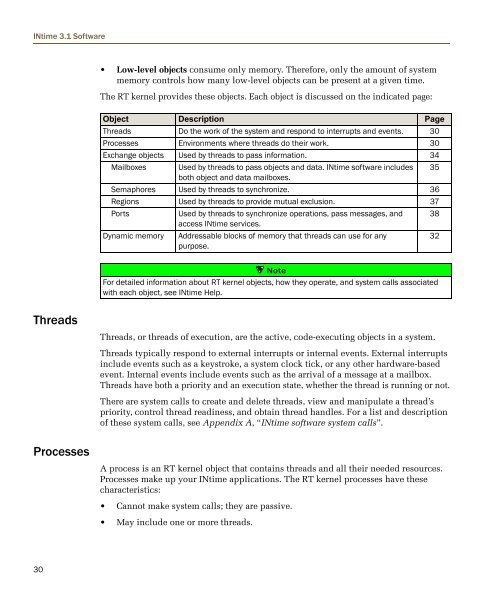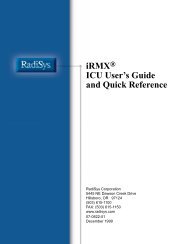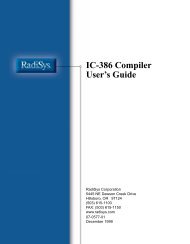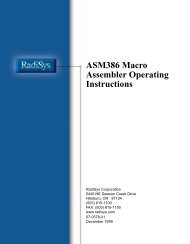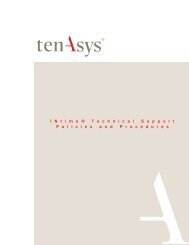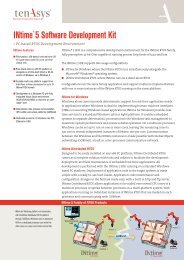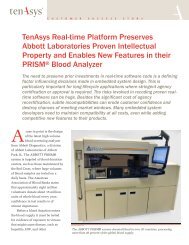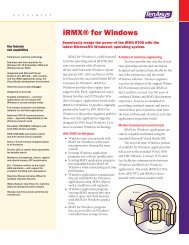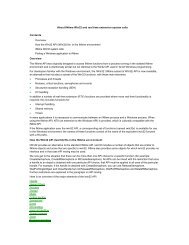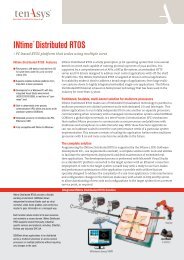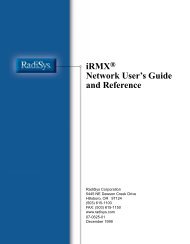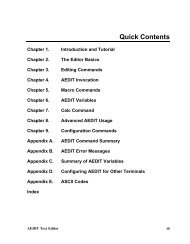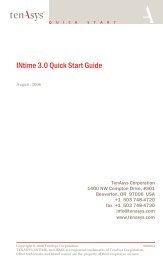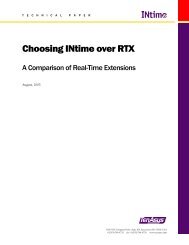INtime® 3.1 Software - tenAsys
INtime® 3.1 Software - tenAsys
INtime® 3.1 Software - tenAsys
Create successful ePaper yourself
Turn your PDF publications into a flip-book with our unique Google optimized e-Paper software.
INtime <strong>3.1</strong> <strong>Software</strong><br />
• Low-level objects consume only memory. Therefore, only the amount of system<br />
memory controls how many low-level objects can be present at a given time.<br />
The RT kernel provides these objects. Each object is discussed on the indicated page:<br />
Object Description Page<br />
Threads Do the work of the system and respond to interrupts and events. 30<br />
Processes Environments where threads do their work. 30<br />
Exchange objects Used by threads to pass information. 34<br />
Mailboxes Used by threads to pass objects and data. INtime software includes 35<br />
both object and data mailboxes.<br />
Semaphores Used by threads to synchronize. 36<br />
Regions Used by threads to provide mutual exclusion. 37<br />
Ports<br />
Used by threads to synchronize operations, pass messages, and 38<br />
access INtime services.<br />
Dynamic memory Addressable blocks of memory that threads can use for any<br />
purpose.<br />
32<br />
Note<br />
For detailed information about RT kernel objects, how they operate, and system calls associated<br />
with each object, see INtime Help.<br />
Threads<br />
Threads, or threads of execution, are the active, code-executing objects in a system.<br />
Threads typically respond to external interrupts or internal events. External interrupts<br />
include events such as a keystroke, a system clock tick, or any other hardware-based<br />
event. Internal events include events such as the arrival of a message at a mailbox.<br />
Threads have both a priority and an execution state, whether the thread is running or not.<br />
There are system calls to create and delete threads, view and manipulate a thread’s<br />
priority, control thread readiness, and obtain thread handles. For a list and description<br />
of these system calls, see Appendix A, “INtime software system calls”.<br />
Processes<br />
A process is an RT kernel object that contains threads and all their needed resources.<br />
Processes make up your INtime applications. The RT kernel processes have these<br />
characteristics:<br />
• Cannot make system calls; they are passive.<br />
• May include one or more threads.<br />
30


